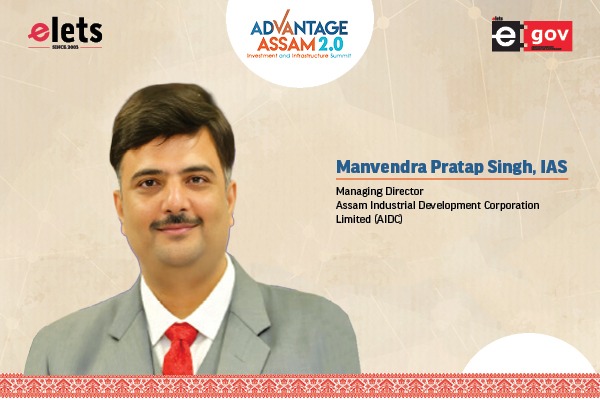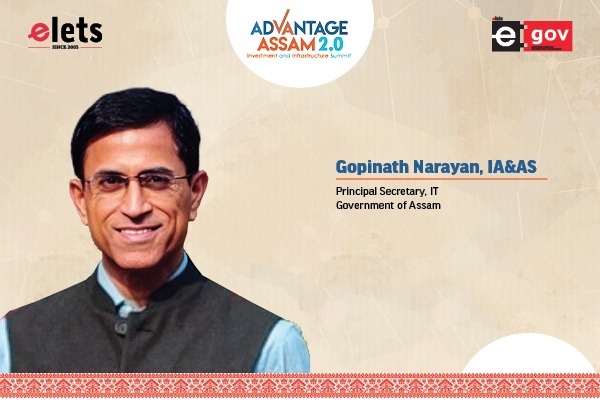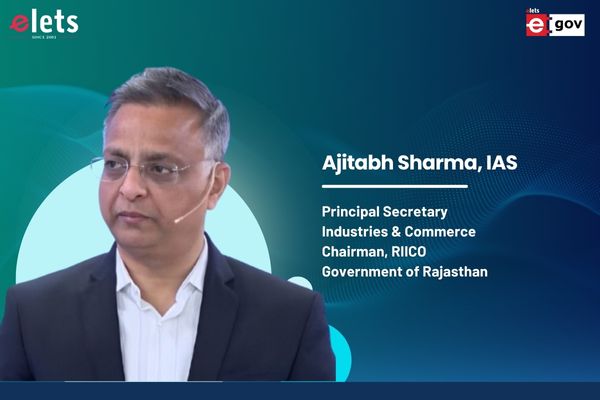

Dr Shrikar Pardeshi
Inspector General of Registration & Controller of Stamps,
Government of Maharashtra
Dr Shrikar Pardeshi elaborates the department’s e-approach in ensuring productive services in an interview with Veena Kurup of ENN
What is the potential of IT in enhancing the scope of governance?

The revolutionary growth in Information Technology has led to a smaller global world that has people more closely connected to each other through Internet based social networks. And considering the change, Department of Registration and Stamps, a 200-year-old government department, started its humble journey into the domain of e-Governance. The advent of the new user-friendly technology and policy reforms by the government clubbed with all the problems faced using the manual mode, gave way to the first computerised application called SARITA (Stamp and Registration Information Technology Application) in the state of Maharashtra in 2002. Gradually, the need for utilisation of better technology and understanding of eGov reforms led to the web based application of i-SARITA in 2012.

However the major hurdles include prolonged completion time for registration process, lack of transparency, involvement of middlemen especially in dealing with land related issues, wastage of paper and photocopies, difficulties in tracing transaction history etc.

Can you take us through the success of SARITA and its transformation to i-SARITA?

During the implementation of the SARITA project, the department realised the importance of further developments in Information Communication Technology space (ICT), and going forward launched SARITA-2 and SARITA-3 in few offices as a pilot project. A need for a better application that could use the technology to the already computerised but stand–alone department activities to a centralised, real-time web-based one was thought of as the future for the department. This technological up gradation led to the web based application of i-SARITA in 2012.
Leveraging the operational benchmark which was already set in 2002, i-SARITA aims to enhance and provide more citizen friendly services and also to reduce the administrative burden on its employees. i-SARITA started in the year 2012 with a new well-connected network to centralise the whole administration and implementation of the registration process. Initially during earlier SARITA project, the traditional computer-based technology was implemented as a standalone system at each Sub Registrar office where as i-SARITA project uses improved digital communication technology with a web based solution. It has a 3-tier web based centralised application and web servers and centralised open source SQL 8.4 database. Network Connectivity is a secured pipeline connectivity through which more than 520 offices (including administration offices) of department are connected.
i-SARITA is a web-based application developed by NIC which connects the 480 Sub Registrar offices in the State of Maharashtra. For better administrative control and ease of implementation of i-SARITA, the State of Maharashtra has been divided into five work divisions i.e. Pune, Mumbai, Thane, Nashik and Nagpur.
How has been the response from the users towards such services?
The initiatives have effectively helped in enhancing the reach of citizen services, creating more effectiveness in operations and transparency in functioning. Those have also helped in eliminating the wastage of paper, saving time and energy, and in bringing more productive results in the department.
Brief us about the other IT powered initiatives implemented by the department?
Since the department is guided by subordinate legislation and statutory guidelines, the processes could not be reengineered. Hence, the department is focused towards enabling IT to achieve its operational objectives by expanding the e-services to different services. Introduction of Public Data Entry System was one such initiative. The data entry was the most time-consuming and error-prone activity in the process. So, the department re-engineered this activity into public data entry, enabling the citizens to control their data fully which would avoid unnecessary rework at Sub Registrar office.
The other major initiative involved is the introduction of ‘e-Step in’ which allows the citizen to book an appointment at the Sub Registrar office online, ultimately enabling to reduce the time wasted during registration process. In addition, the mandatory collection of photocopies of documents during registration process has been replaced with the scanned copies of the original documents, thus, reducing the consumption of paper and expenses. Furthermore, citizens are now provided with thumbnail print of their documents and also a soft copy on the CD for easy storage and future references.
Now, the registration process has to be completed within the office working hours, as the system does not take any entry after office hours. This feature has helped to curb any kind of dubious activities that might happen at the Sub Registrar office. During the earlier SARITA project the documents collected were printed on one side of the paper to facilitate scanning but it turned out to be time consuming. In i-SARITA ADF scanner was introduced which could scan back-to back printed documents and this helped in reducing the time of scanning.
e-Payment services is the other vital service being implemented and successfully operated through the utilisation of IT. Payments are made through Government Receipt Accounting System (GRAS). The payment can also be done using online payment through Internet banking and debit cards. The payment can also be made across the counter (ATC) payment at designated bank branches. The project started with digitisation of 10 year old data and scope was expanded to 25 years; this was kick started by the department with the help of NIC.
“IT initiatives have effectively enhanced the reach of citizen services, bringing effectiveness in operations and transparency in government functioning. Those have helped eliminating wastage of paper, saving time and energy, and bring more productive results”
What is the approach adopted by the department to build qualitative implementation?
During the implementation of earlier SARITA project an awareness generation campaign was conducted to motivate the employees towards the computerisation of the registration process.
What is the department’s future vision towards utilising e-platforms to enhance the scope of citizen services?
The department will enhance the focus on prevention of fraudulent activities, particularly about the information related to authenticity of the property, providing alerts between search and registration processes, and launching of e-registration and e-filing services. The Department Of Registration and Stamps of Maharashtra has a vision of implementing e-Registration for complete transparency and high efficiency. In this system of e-Registration the citizens can prepare their documents online, make necessary payments online, and submit documents for registration which would be sent by the department electronically.
Be a part of Elets Collaborative Initiatives. Join Us for Upcoming Events and explore business opportunities. Like us on Facebook , connect with us on LinkedIn and follow us on Twitter, Instagram.
"Exciting news! Elets technomedia is now on WhatsApp Channels Subscribe today by clicking the link and stay updated with the latest insights!" Click here!













